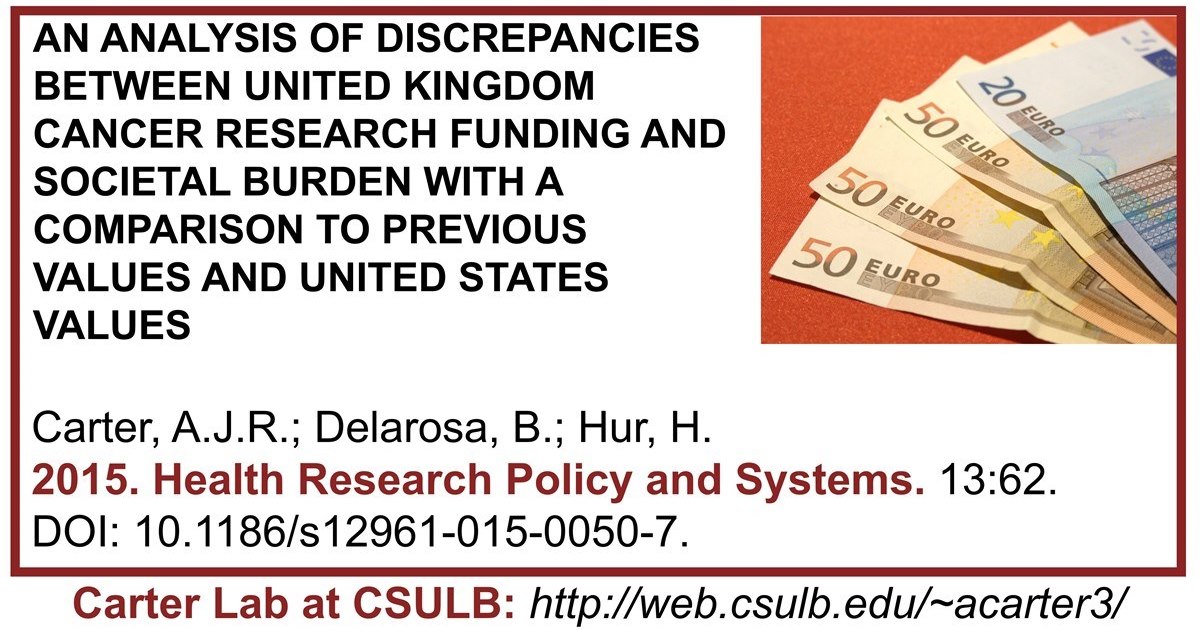ABSTRACT:
Background: Ideally, the allocation of research funding for each specific type of cancer should be proportional to its societal burden. This burden can be estimated with the metric "years of life lost" (YLL), which combines overall mortality and age at death.
Methods: Using United Kingdom data from 2010, we compared research funding from the National Cancer Research Institute to this YLL burden metric for 26 types of cancers in order to identify the discrepancies between cancer research funding allocation and societal burden. We also compared these values to United States data from 2010 and United Kingdom data published in 2005.
Results: Our study revealed a number of discrepancies between cancer research funding and burden. Some cancers are funded at levels far higher than their relative burden suggests (testicular, leukaemia, Hodgkin’s lymphoma, breast, cervical, ovarian, prostate) while other cancers appear underfunded (gallbladder, lung, nasopharyngeal, intestine, stomach, pancreatic, thyroid, oesophageal, liver, kidney, bladder, and brain/central nervous system). United Kingdom funding patterns over the past decade have generally moved to increase funding to previously underfunded cancers with one notable exception showing a converse trend (breast cancer). The broad relationship between United Kingdom and United States funding patterns is similar with a few exceptions (e.g. leukaemia, Hodgkin’s lymphoma, prostate, testicular cancer).
Conclusions: There are discrepancies between cancer research funding allocation and societal burden in the United Kingdom. These discrepancies are broadly similar in both the United Kingdom and the United States and, while they appear to be improving, this is not consistent across all types of cancer.
